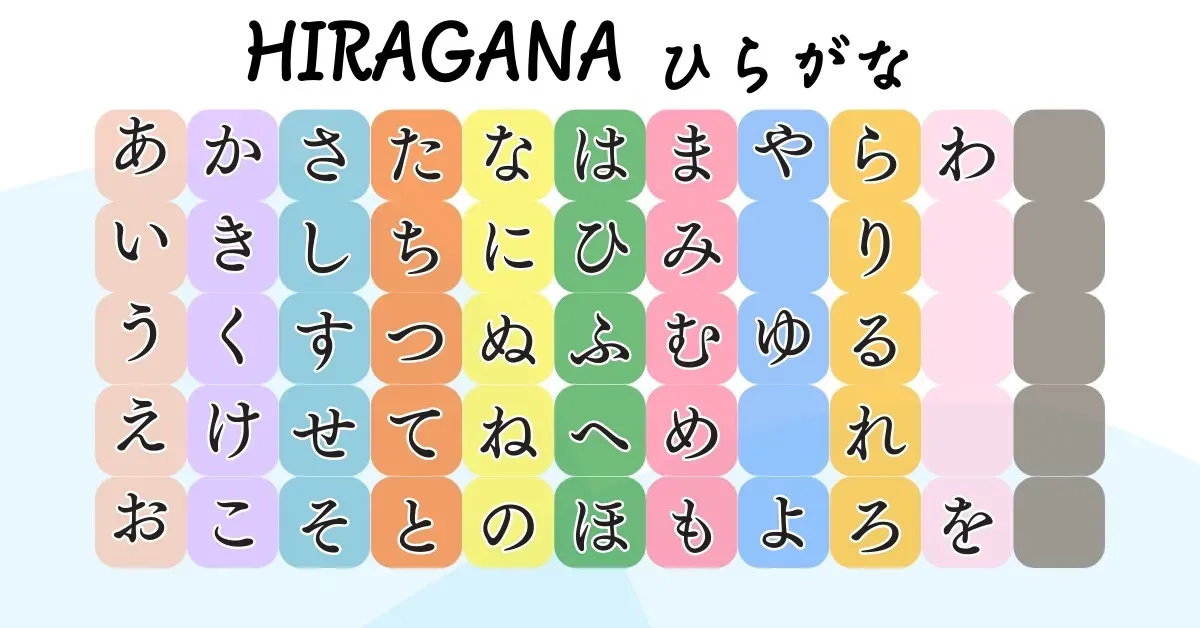Getting Started with Japanese: Hiragana and Katakana

If you're beginning to learn Japanese, one of the first challenges you'll face is the writing system. At first glance, it can feel overwhelming — but there’s a clear and manageable starting point: Hiragana (ひらがな) and Katakana (カタカナ).
These two phonetic scripts, known collectively as kana, form the foundation of written Japanese. Mastering them allows you to read and write every sound in the language, and they’re much more accessible than you might expect.
What Are Hiragana and Katakana?
Japanese writing combines three types of scripts: Hiragana is used for native words and grammar. Katakana appears in foreign words, names, onomatopoeia, and for emphasis. And Kanji, originally borrowed from Chinese, is used for more complex words and ideas.
Unlike Kanji, which can take years to master, both Hiragana and Katakana are phonetic. Each character represents a syllable, like "ka" or "mi." Once you’ve learned both sets, you can write anything in Japanese — even if it’s not exactly how native speakers typically do it.
Hiragana: The Core Script
Hiragana has a soft, flowing appearance and is everywhere in Japanese writing. It’s the first script Japanese children learn, and it forms the backbone of grammar and everyday words.
You’ll see Hiragana used for native words that don’t have kanji, for grammar particles like は and を, and in the endings of verbs and adjectives. It also shows up as small reading guides (called furigana) above kanji to help with pronunciation.
Here are a few examples:
| Word | Reading | Meaning |
|---|---|---|
| さくら | sakura | Cherry blossom |
| たべる | taberu | To eat |
| こんにちは | konnichiwa | Hello |
There are 46 main Hiragana characters. With a few sound tweaks (such as adding ゛or ゜), you can write every sound used in modern Japanese.
Katakana: For Foreign Words and Emphasis
Katakana has a sharper, more angular look. You’ll usually see it in borrowed words like “coffee” or “computer,” as well as in foreign names and technical language. It can also be used to emphasize something in writing — sort of like italics in English.
Some examples include:
| Word | Reading | Meaning |
|---|---|---|
| コーヒー | koohii | Coffee |
| コンピュータ | konpyuuta | Computer |
| ピザ | piza | Pizza |
Katakana also has 46 base characters and mirrors the Hiragana sound system. You’re just learning a different way to write the same sounds.
A Brief History
Hiragana came from a cursive style of kanji in the 8th and 9th centuries. Early on, it was mainly used by women, while men used kanji or classical Chinese. Around the same time, Buddhist monks developed Katakana as a shorthand to annotate texts. Over time, both scripts became essential for everyone.
Hiragana vs. Katakana
At a glance, the main difference is visual. Hiragana is round and fluid, while Katakana is blocky and precise. Hiragana shows up in almost every sentence, while Katakana is used more selectively.
Most learners start with Hiragana, then move on to Katakana. The sounds are the same — it’s just a matter of learning two different sets of shapes.
How Long Does It Take to Learn?
You can realistically pick up both syllabaries in about a week if you study consistently. Try learning 10 to 15 characters a day, and mix writing, reading, and speaking. Regular review is key.
Tips That Work
Writing characters by hand helps you remember them. Saying the sounds out loud as you write also reinforces the connection. Mnemonics can be powerful — if a character reminds you of a shape or a picture, lean into that. Try reading real words as soon as you can, even if you don’t understand them yet. Spaced repetition (the kind of review system that reminds you what to practice) also helps a lot.
And most importantly, stay consistent. A little practice every day works better than cramming once a week.
Good Resources to Start With
If you're a visual learner, check out the "Learn Hiragana Fast" video on YouTube. It walks through the characters with simple visuals and sound guides.
Another great option is nihondex.com. It’s our interactive platform designed to teach you kana through guided lessons, drills, and spaced repetition. It tracks your progress and helps build a daily habit, making it easier to stay on track.
Final Thoughts
Hiragana and Katakana might look strange at first, but they follow consistent rules and can be learned quickly with the right approach. Once you’ve got them down, you’ll be able to read basic Japanese, write your name, understand menus and signs, and take your first real steps toward fluency.
Start with just a few characters. Practice them tomorrow. By the end of the week, you’ll already know more than when you started.
がんばって (Ganbatte) — Do your best.
